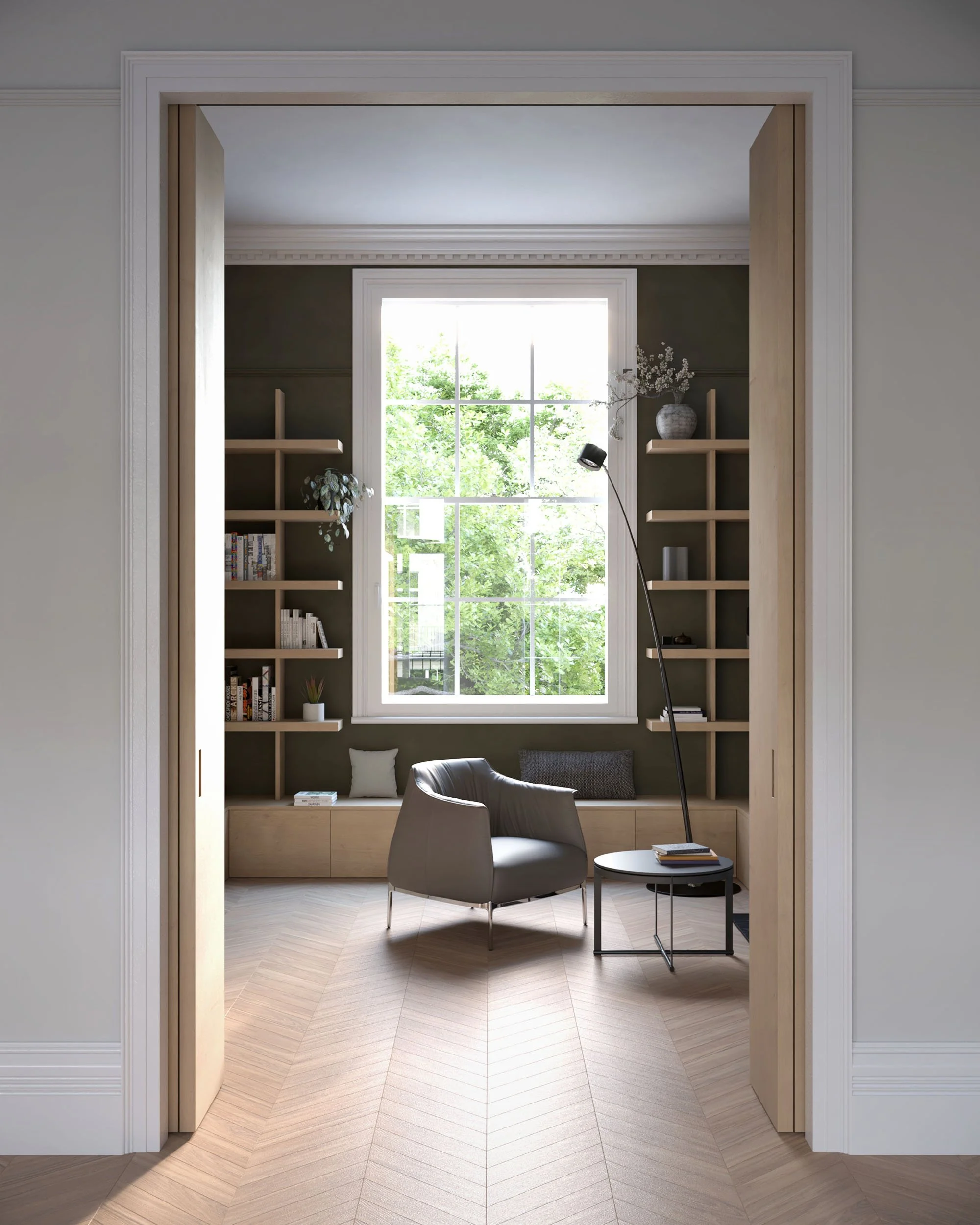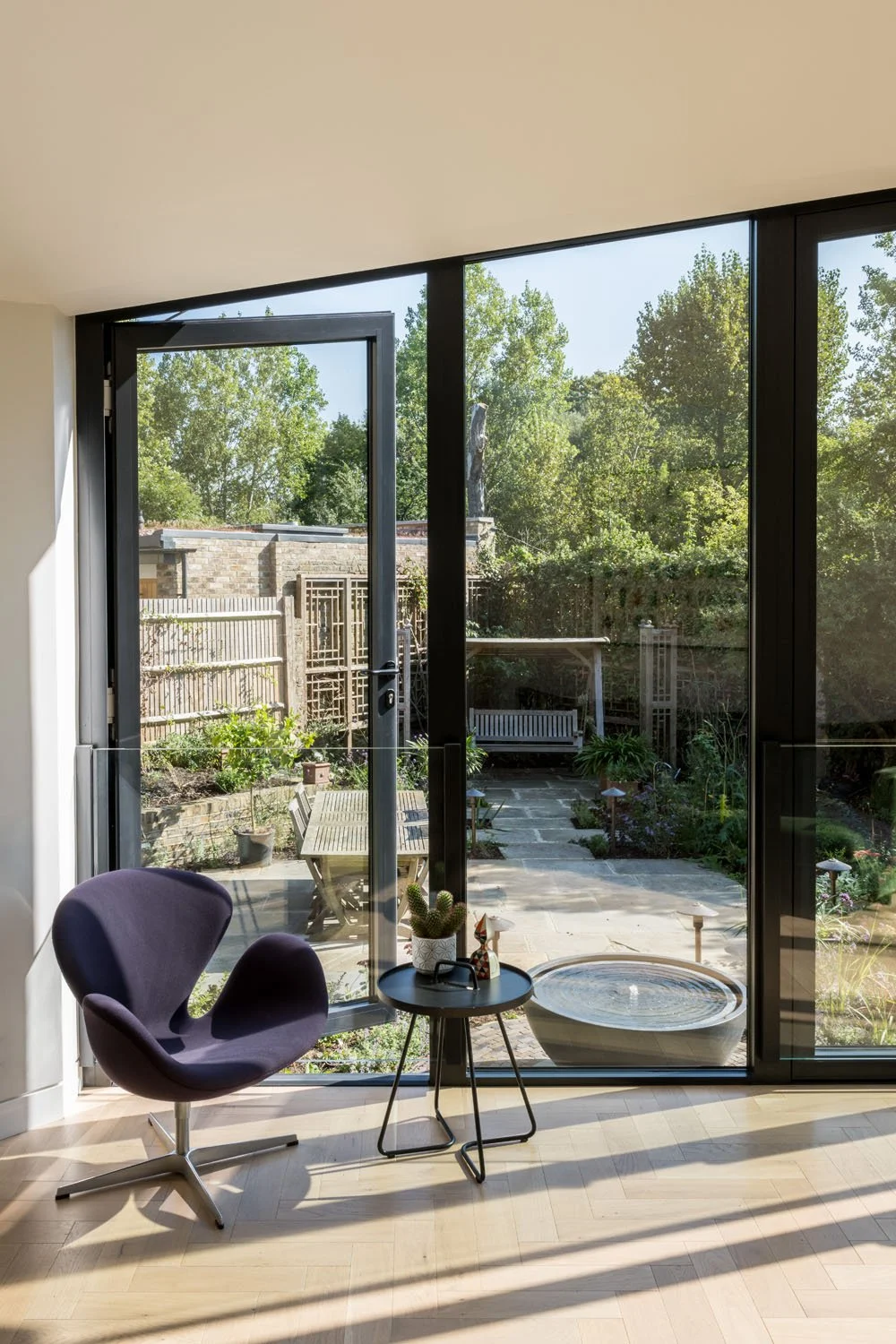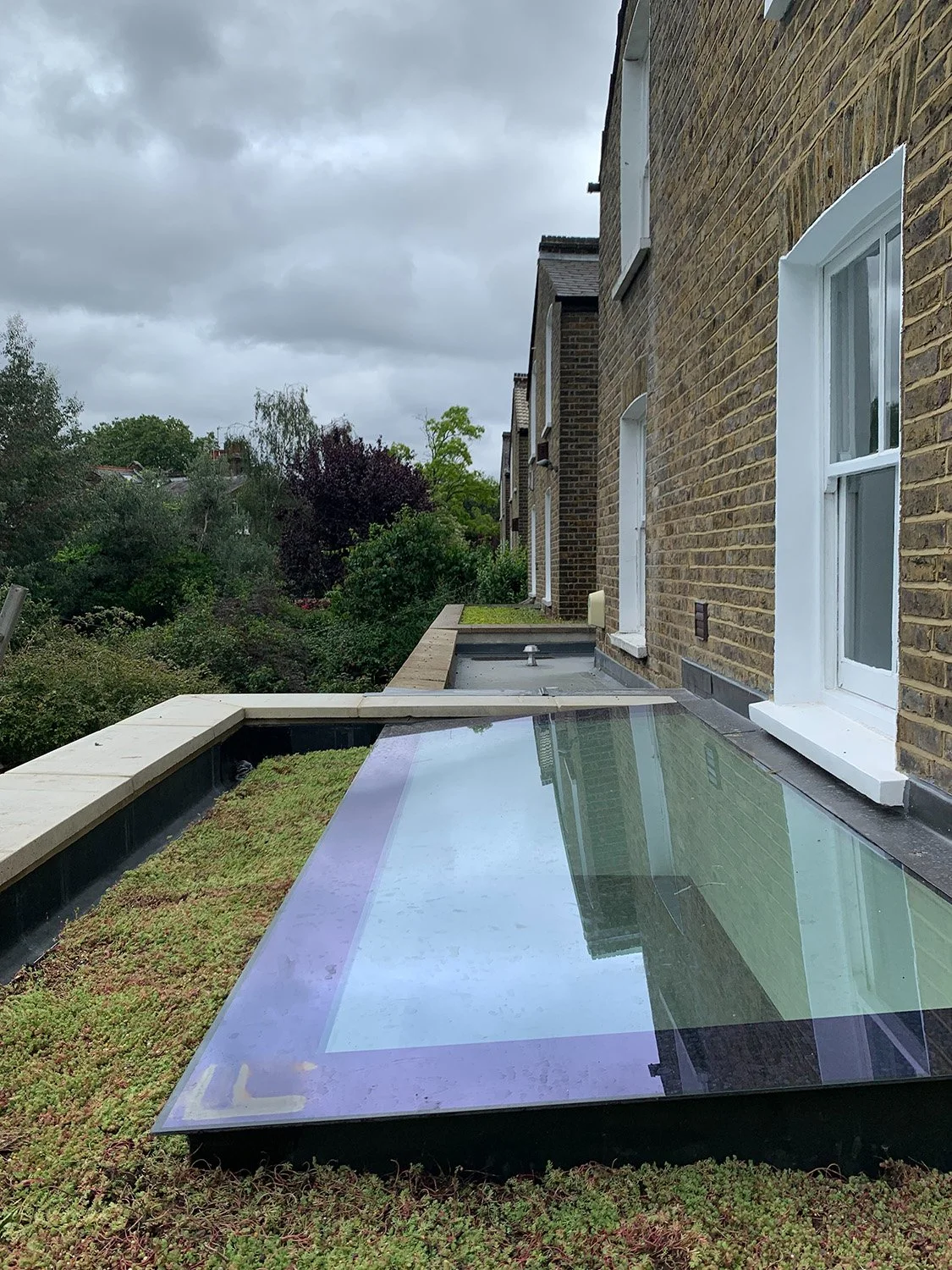Cooling and Retrofitting Your Victorian House
Why Every Victorian House Needs a Cooling Retrofit in Today’s Climate
If you are planning to renovate a Victorian house, you already know its charm is matched only by its complexity. These homes hold a quiet power over our collective imagination, with ornate facades, generous proportions, and rich architectural detail that shape the character of London’s streets. Yet they were built for a very different climate — and a very different pattern of energy use.
As hotter summers become part of life in the UK, the challenge is clear: how do you keep your home cool and comfortable without losing the qualities that make it so special? Future-proofing a Victorian house is about more than safeguarding its heritage. It means adapting it to the realities of a changing climate while holding on to its period grace.
With the right retrofit process, you can protect your home’s integrity and create interiors that stay cool through the height of summer and warm through the depths of winter — ensuring comfort without compromise. This guide shows how modern innovation can work hand in hand with historic sensibility, helping you improve thermal efficiency, enhance ventilation, and add smart, eco-friendly cooling — all while respecting the elegance of Victorian architecture.
Understanding the Summer Cooling Challenges of a Victorian Home
Victorian houses are renowned for their intricate architecture and craftsmanship, with features such as solid brick walls, large bay windows, and ornate detailing. These homes were designed to keep homes warm in winter, but their materials can store unwanted heat in the summer months, making them uncomfortable during heatwaves and trapping moist air indoors.
High ceilings and large sash windows, designed to improve airflow, can help to a degree, but may not be sufficient for prolonged hot spells. To address these challenges, thoughtful upgrades are essential — maintaining historic character while preparing for future climate resilience.
Key characteristics of Victorian homes include:
Materials: Solid brick and timber construction
Windows: Large bay and sash windows
Ceilings: Typically high to encourage airflow
Design details: Ornate facades and intricate trim
Retrofitting these unique features with modern upgrades — such as double glazing, smart ventilation, sustainable insulation, or discreet air source heat pumps — can ensure these beautiful buildings remain comfortable and liveable year-round.
How to Assess Your Victorian House Before Starting the Retrofit Process
Before you begin the retrofit process, take time to assess your Victorian home’s current condition. An energy efficiency audit will highlight the upgrades with the most positive impact on comfort, performance, and heritage.
Your evaluation should consider:
✅ Windows and doors: Check for draughts and poor sealing around sash windows.
✅ Insulation: Examine solid walls, floors, and lofts for opportunities to improve thermal performance while protecting ventilation.
✅ Heating and cooling systems: Review your existing setup — can you transition to a heat pump or more efficient system?
✅ Ventilation: Make sure air bricks and other passive features are operational.
Example checklist for upgrades:
| Feature | Potential Upgrade |
|---|---|
| Victorian sash windows | Double or triple glazing |
| Solid brick walls | Internal or external wall insulation |
| Central heating system | Upgrade to air source heat pump |
| Loft | Improve insulation or convert |
A thorough assessment ensures you invest wisely and protect both the value and comfort of your home.
Retrofit Upgrades for Victorian Homes That Lower Energy Use and Boost Comfort
Victorian houses often overheat because their solid walls absorb and store heat. Retrofitting with thermal efficiency in mind is essential to prepare for hotter summers.
Key enhancements include:
✅ Wall insulation: Use breathable, sustainable insulation systems — including carefully detailed external wall insulation — that respect the original fabric of the home.
✅ Floor insulation: Improve performance at ground level to help maintain cooler indoor temperatures.
✅ Windows and doors: Choose energy-efficient glazing while retaining period-appropriate frames.
✅ Solar panels: Discreetly integrated to reduce reliance on fossil fuels and support cooling technologies.
These measures can dramatically enhance both winter and summer comfort while lowering energy use and preserving the historic look of your Victorian house.
Improving Victorian Home Ventilation for Year-Round Comfort
Ventilation is vital for air quality and moisture control — essential for both the health of the building and its occupants.
In their original design, Victorian houses relied on open coal fires to draw fresh cold air into rooms through draughts in windows, floors, and vents. The rising warm air — often carrying smoke and pollutants — escaped through chimneys, creating a natural “stack effect.”
Once a home is retrofitted to be more airtight, this pathway disappears. Without a replacement strategy, moist air can become trapped, leading to condensation and damp problems.
Modern ventilation solutions include:
MVHR (Mechanical Ventilation with Heat Recovery): Supplies filtered fresh air while recovering heat in winter and supporting cooling in summer.
Summer bypass options: Allow cooler evening air to flush the home naturally.
Discreet ducting and vents: Blend with Victorian interiors to preserve heritage character.
Passive Cooling First: Sustainable Ways to Keep Your Victorian Home Comfortable
If you are thinking of how to keep your home comfortable in summer — whether improving your current property or shaping the brief for a renovation — start by keeping unwanted heat out.
Passive Cooling Strategies:
Harness the stack effect: Use high-level openings with lower shaded inlets to draw hot air up and out.
Plan for shading: Shutters, blinds, or deep eaves to block summer sun while allowing winter light.
Encourage cross ventilation: Openings on opposite sides to capture breezes.
Select reflective finishes: Light-coloured roofs and walls limit heat absorption.
Integrate greenery: Green roofs, climbing plants, and planting for cooler microclimates.
These steps reduce energy use, cut running costs, and make your home more resilient.
Smart Cooling Technologies That Work with Period Properties
Once passive measures are in place, smart systems can fine-tune comfort:
✅ Smart thermostats: Adjust heating and cooling schedules efficiently.
✅ Controlled ventilation systems: Respond to real-time temperature and air quality.
✅ Energy-efficient appliances: Lower costs and carbon footprint.
Automation should enhance, not override, your control — think of it as an assistant, not the boss.
Sustainable Cooling Systems for Victorian Houses with Positive Impact
If active cooling is still needed:
✅ Split systems: Compact, minimal impact on façades.
✅ Air source heat pumps: Provide heating and cooling with low carbon emissions.
✅ Solar attic fans: Remove loft heat using free energy.
✅ Cool roofs: Reflective surfaces to limit heat build-up.
Choosing low-carbon cooling has a positive impact on your comfort, your energy bills, and the environment.
Cooling Through Landscaping: External Shading and Sustainable Design
Deciduous trees: Shade in summer, sunlight in winter.
Native, drought-tolerant plants: Low water use, wildlife benefits.
Vertical greenery: Insulation and cooling on sunny façades.
Permeable ground surfaces: Reduce heat reflection and improve drainage.
Landscaping should be integrated into the retrofit process for the greatest benefit.
Preserving the Heritage of Your Victorian Home While Retrofitting
The most successful retrofits protect heritage while delivering comfort:
✅ Refurbish sash windows with slim-profile glazing.
✅ Choose sustainable insulation: Wood fibre or lime plasters allow walls to “breathe.”
✅ Hide modern systems: Keep interiors uncluttered.
✅ Match finishes: Ensure new elements feel original.
Final Thoughts: Making Your Victorian House Ready for Hotter Summers
Adapting a Victorian house for hotter summers is essential for comfort, energy efficiency, and long-term value. The right retrofit process — from fabric-first measures to discreet cooling systems — will protect your home’s heritage while ensuring it is a welcoming, resilient sanctuary.
If you are thinking of retrofitting your Victorian house, we would love to help you design a solution that combines sustainable insulation, improved ventilation, and low-carbon cooling — with a positive impact on your comfort, your energy use, and the planet.
Thinking About Retrofitting?
If you’re planning a renovation, extension or conversion, let’s explore how retrofitting can enhance the project. Whether you want a full architect-led retrofit or a strategic phased upgrade, we’re here to help.
Get in touch to book a free consultation and start designing a better, more sustainable home.




